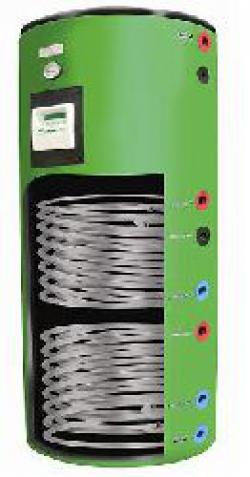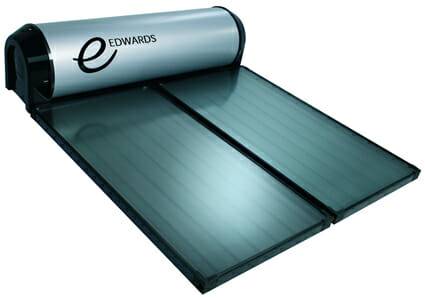The history of Edwards solar hot water systems began more than 60 years ago, when Edwards started producing hot water heaters in 1963. Over the years, they’ve built up a large, but select team of Edwards Dealers around Australia.
Not only is Edwards a major Australian brand- they’ve become an international leader in the production of solar hot water systems for both residential and commercial applications, through providing customers with excellent design, performance and reliability. Edwards offer you a range of technologies to choose from.

We've purchased a house that has an Edwards LX32 S3 TITAN SERIES 2A solar hot water system – we are in Melbourne. It has taken a while, as reference material to the system seems to have been removed after Edwards was purchased by Rheem. Over winter we have had no hot water of an evening. Hot Water Problem #5: Your hot water system makes strange noises. Bangs, pops and gurgling sounds can be caused simply by the expanding and contracting of metal parts. This is increased in older hot water units as mineral and hard water builds up on the inside of the tank.
So does a solar hot water system make sense for you?
Get a quick quote here, or scan the info below.
Get a Quick Quote on a Solar Hot Water System:
Fill out the brief form below, and get a quick, no-obligation quote on optimizing your hot water consumption with a high-efficiency heat pump or solar hot water system.
Edwards Produce Three Styles of Solar Hot Water
Close-coupled system
The Edwards close-coupled solar hot water system is so named because the tank is close to the collector plates. It uses what is called the thermosiphon effect- heat is collected in the flat plates, and then naturally rises, into the storage tank.
This ensures maximum efficiency- no pumps are requied to move the heat between the collector plates and the storage tank.
Split System
In this configuration. your Edwards solar hot water system is split into two components. The collectors go on the roof, but the storage tank is located (usually) on the ground.
This is an ideal arrangement where your roof may not handle the weight of a close-coupled system, or where aesthetics dictate the smallest. most stylish profile on the roof possible.
Heat Pump System
There are many situations where either a close-coupled, or even a split-system solar hot water system in not appropriate.
It may be that there is no suitable, north-facing roof area. It may be that the angle of the roof is too high. Perhaps the north-facing roof is badly shaded. Perhaps you’re in a heritage area, and aren’t allowed to put one on the roof. Maybe your partner just doesn’t want to see a solar hot water sytem on their roof. Whatever the reason, a hea5t pump can be the answer.
Although they don’t use the direct, radiant heat of the sun, heat pump hot water systems are treated as solar for the purpose of government incentives.
Edwards Solar Hot Water User Manual Instructions
In fact, it’s the sun that heats the air. All a heat pump does, is to recover some of the heat that the sun has put in the atmosphere. Putting 1kW of electricity into a heat pump, can give you as much heat as it would require 4kW of electricity to produce.
Choose Which Edwards Solar System Is Best For You.
Edwards Solar Hot Water Installation Manual
As you can see, there are three different styles of Edwards solar hot water systems to choose from. But the choice doesn’t stop there. In the split system, you can choose between a gas-bossted, or electric-boost system. In general, the gas-boosted systems are dearer to buy and install, but cheaper to run- if you’re on town gas. The more hot water you use, the better you are off choosing the gas-boosted system.
How do you ensure you get the BEST solar hot water deal?
Get multiple, obligation-free quotes. It’s easy…
We can help you get free quotes on installing a new solar hot water system in Brisbane, Sydney, Canberra, Melbourne, Adelaide, Perth, Hobart, and most Regional and rural areas. Just click here…

Solar Edwards: Another W.A. Solar Success Story

Alan Collier Edwards and the inspiration for the first Edwards hot water system both originated from the farmlands of the South West of Western Australia.
The post war era saw Alan Edwards working the fields of a small farm holding and returning each evening to a humble farm cottage deprived of all conveniences. After the evening meal he would light his cigarette from the top of the glass chimney of the aladdin table lamp used to light the room as electricity was not available. One evening while lighting his cigarette he casually passed the comment to his wife that he was surprised by the amount of heat which came from the simple kerosene lamp.
Edwards Solar Hot Water Manual
The First Edwards non-Solar Hot Water System
From this observation he decided to build a hot water system using the aladdin lamp as the source of heat. Taking a discarded 44 gallon drum he cut a hole in the top and bottom lid to allow an old piece of galvanised iron pipe to be fitted and act as a central flue.
1963 Sees First Production of Edwards Solar Hot Water Heaters
There’s been a lot of advances in solar technology since Edwards commenced manufacturing water heaters in Australia in 1963. Today, an international organisation, Edwards has progressed to be a leader in producing hot water systems for both domestic and commercial purposes using solar technology to meet any client requirements. Generally, where there’s sunshine you’ll find an Edwards stainless steel solar water system hard at work – in Asia, the Pacific, in the Americas, Europe, Africa and the Middle East – gaining a world wide reputation for excellent value for money and the latest in engineering design.
Edwards Solar Hot Water User Manuals
With the financial, engineering and technical resources of Edwards and a commitment to quality, innovation, after sales service and extensive warranty, Edwards has become a major force in solar hot water around the world.